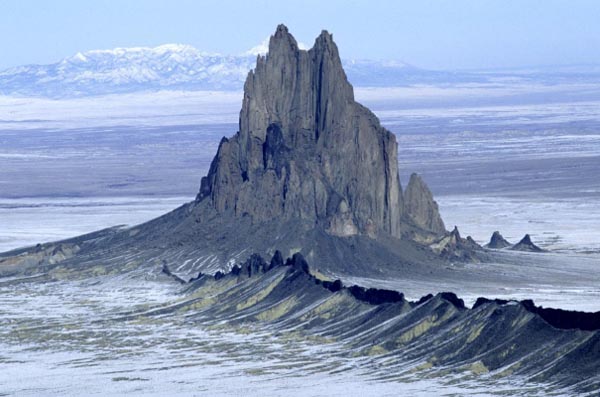Chapter 1. Igneous Rocks
Map Learning Exercises
Question 1 of 2
Igneous Rocks: Landforms
Click on the dike
Consider this photograph of a landscape.
{"title":"selection","description":"This is the dike because it is blade-shaped and cuts through the surrounding rock.","type":"correct","color":"#99cc00","code":"[{\"shape\":\"poly\",\"coords\":\"165,254,187,270,285,240,338,272,593,301,580,386,437,364,326,337,205,294,182,282,159,274\"}]"} {"title":"talus","description":"This is sediment that has broken off the feature and created a talus pile.\n","type":"incorrect","color":"#993300","code":"[{\"shape\":\"poly\",\"coords\":\"579,391,355,351,225,303,175,287,113,314,239,354,430,390\"},{\"shape\":\"poly\",\"coords\":\"447,227,554,255,501,286,342,271,281,234,286,240,186,267,161,254,158,271,173,283,-5,274,-5,254,146,219,197,198,266,224,285,213,337,234,359,233,375,241,399,241,425,244\"}]"} {"title":"neck","description":"This is not long and skinny, or “sword shaped” like a dike. It is a volcanic neck.\n","type":"incorrect","color":"#3366ff","code":"[{\"shape\":\"poly\",\"coords\":\"447,227,414,148,402,168,397,128,353,90,325,16,316,15,304,46,287,14,270,16,257,51,237,76,235,130,217,132,202,172,190,179,190,195,266,222,286,213,336,234,358,233,380,241,397,240,426,242\"}]"} {"title":"mnts","description":"These are mountains in the distance.\n","type":"incorrect","color":"#ffff00","code":"[{\"shape\":\"poly\",\"coords\":\"340,53,354,90,553,85,551,76\"},{\"shape\":\"poly\",\"coords\":\"254,43,226,80,230,100,-4,99,2,65,166,29\"}]"}Source: Airphoto - Jim Wark.
Correct.
Please try again.
